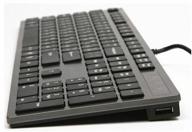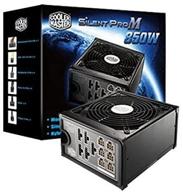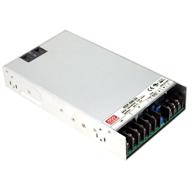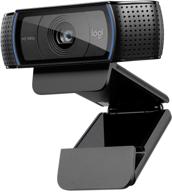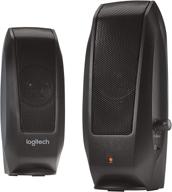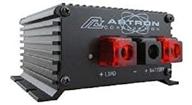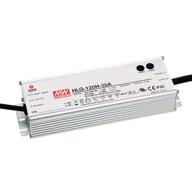Protect Your Devices and Data from Power Surges and Outages
Power surges and outages can wreak havoc on electronic devices and result in loss of important data. Using an uninterruptible power supply (UPS) is crucial to protect your equipment and information.
Similar products
Causes of Power Problems
There are several common causes of power fluctuations and failures:
- Electrical grid issues - Equipment failures, demand spikes, and problems at power plants can cause voltage fluctuations or interruptions.
- Weather events - Storms, lightning strikes, and heatwaves often disrupt electrical service.
- Accidents - Rodents, fallen tree limbs, and vehicle crashes can damage power lines and equipment.
- Overloaded circuits - Drawing too much power through outlets and wiring creates drops or spikes in voltage.
Top products in 🔋 Uninterruptible Power Supply (UPS)
Potential Damage from Power Issues
Power surges, sags, and outages can harm electronics and data in several ways:
- Fried circuits - Voltage spikes can overload and fry delicate electronic components.
- Data corruption - Improper device shutdowns may corrupt operating systems, files, and drives.
- Equipment failure - Outages deprive devices of necessary power, while surges can short-circuit them.
- Permanent data loss - Unsaved files and unprotected drives are vulnerable during power interruptions.
How a UPS Provides Protection
A UPS acts as a safety buffer between your electronic equipment and the outside power supply. It offers several forms of protection:
- Voltage regulation - Stabilizes inconsistent voltages to prevent damage to connected devices.
- Power filtering - Isolates equipment from power surges and spikes.
- Battery backup - Provides temporary power from battery when electricity is cut off.
- Voltage isolation - Prevents surges from traveling back into power lines.
- Controlled shutdown - Allows safe file saving and system shutdown if outage lasts beyond battery life.
Types of UPS Systems
There are three main types of UPS units:
- Standby - Switches to battery if input power is lost. Most affordable but brief transfer time may allow surges through.
- Line-interactive - Provides some voltage regulation and filtering. Adds voltage boosting/trimming to prevent transfers to battery.
- Online/double-conversion - Continuously converts input AC power to DC and back to regulated AC output. Most expensive but best surge protection.
Larger units also come in 3-phase configurations for more demanding applications.
Choosing the right level of protection will depend on your power environment, connected equipment, and budget.
Investing in a quality UPS lets you rest easy knowing your devices and data are safeguarded from the havoc power problems can cause. Do your research to find the right solution for your home or office power protection needs.
Causes of Power Problems
Power surges, sags, and outages can cause major headaches by damaging equipment or losing unsaved work. Understanding what causes electricity issues allows you to take steps to prevent problems.
Grid and Infrastructure Failures
The electrical grid and power infrastructure can trigger fluctuations and interruptions:
- Equipment failures - Transformers, capacitors, and distribution lines are vulnerable to malfunctions from age, weather, or accidents.
- Overloaded grids - During heatwaves, high demand can overload systems and cause brownouts or rolling blackouts.
- Power generation issues - Problems at power plants like fires, maintenance, or fuel supply loss can disrupt output.
For example, in February 2021, winter storms in Texas led to blackouts across the state as demand exceeded capacity.
Another interesting products
Severe Weather Events
Inclement weather is a major cause of power issues:
- Lightning - Strikes can damage power lines and equipment. Voltage surges can travel to homes.
- High winds - Can topple trees and power poles, severing connections.
- Ice storms - Added weight can collapse poles and lines. Ice can also damage infrastructure.
- Floods - Can inundate electrical infrastructure and cause water damage.
In 2020, Iowa suffered a derecho wind storm that destroyed millions of acres of crops and left over 700,000 people without power.
Animal and Accidental Damage
Critters and accidents are other common culprits:
- Squirrels, rats, snakes - Can chew through wires or get electrocuted on power lines.
- Tree limbs - Falling branches can disrupt overhead wires.
- Car accidents - Vehicles striking poles can sever connections.
- Construction mishaps - Digging or excavation work may hit buried power lines.
For example, squirrels cause around 15-20% of power outages according to utility company estimates.
Overloaded Circuits and Wiring Issues
Problems with electrical circuits can lead to local outages in homes or offices:
- Drawing too much power - Outlets and circuits can get overloaded by large appliances or too many devices.
- Faulty wiring - Old, damaged, or improperly installed wires can fail or spark fires.
- GFI/RCD trips - Safety devices cut power if abnormally high current is detected to prevent electrocution.
- Loose connections - Time and vibration can loosen plugs and wires, interrupting flow.
Safety inspections and modernizing old wiring reduces risks. High-draw devices like heaters may need their own circuit.
Being aware of potential power disruption causes allows you to take protective steps like surge suppressors, UPS systems, and routine electrical maintenance.
Potential Damage from Power Issues
Power surges, spikes, disruptions and outages can wreak havoc on electronic devices and lead to loss of irreplaceable data. Understanding the types of damage unstable power can cause allows you to take protective measures.
Fried Circuits and Components
Voltage spikes from lightning or faulty wiring can overload and fry delicate electronic components:
- Burned wires and PCBs
- Melted solder connections
- Shorted or exploded capacitors
- Damaged semiconductors
For example, a lightning-induced power surge could overload a PC's power supply and motherboard ICs.
Data Corruption and Operating System Damage
Sudden power loss can lead to file and OS corruption:
- Hard drive corruption - Lost clusters, bad sectors, disk errors.
- Software and OS damage - Preventing booting, crashing programs.
- BIOS settings reset - Lost custom configurations.
Forced reboots don't allow systems to shut down cleanly, causing file system and registry problems.
Equipment Failure
Blackouts, brownouts, and surges can damage electronics in different ways:
- Blackouts - Loss of power can crash equipment and corrupt data.
- Brownouts - Low voltage can starve devices, crashing or damaging them.
- Surges - Excessive voltage can short circuit and fry delicate components.
Phones, computers, smart home devices, appliances, and more are at risk without adequate protection.
Permanent Data Loss
Any files not backed up are vulnerable during power disruptions:
- Lost documents and media - No chance to save work before forced shutdown.
- Wiped out databases - Stores like contacts, financial data, and inventories.
- Corrupted backups - If connected backup drives are impacted too.
Sudden outages give no time to properly close programs and backup new data.
Protection From Power Damage
You can mitigate the risks using preventative tools like:
- Surge protectors - Absorb voltage spikes before reaching devices.
- UPS battery backups - Bridge power gaps during outages.
- Generators - Long-term backup power source.
- Smart surge protectors - Monitors voltage and offers alerts.
Taking precautions allows you to avoid the costly impacts fluctuating and interrupted power can inflict on your electronics and data.
How a UPS Provides Protection
A UPS, or uninterruptible power supply, is an essential device that provides multi-layered protection for equipment against power problems. Understanding how they work allows you to choose the right UPS for your needs.
Voltage Regulation
UPS systems regulate voltage to prevent damage to connected devices. They do this in a few key ways:
- Automatic voltage regulation - Smooth out fluctuations in power feed.
- Boost/cut voltage - Correct under or over voltage conditions.
- Provide consistent output - Stabilize current to safe levels for equipment.
This protects devices from voltage fluctuations that can degrade performance or even destroy circuits.
Power Filtering
UPS units provide filtering to isolate connected equipment from power surges and spikes:
- EMI/RFI filters - Suppress electromagnetic and radio frequency interference on the line.
- Surge suppressors - Absorb and dissipate sudden voltage spikes before they reach equipment.
- Noise filters - Reduce erratic peaks and distortions in the sine wave signal.
This safeguards sensitive electronics from surges and abnormalities in the input power feed.
Battery Backup
During power outages, the UPS provides temporary power from its internal battery:
- Immediate failover - Seamlessly switches to battery power within milliseconds.
- Clean power - Provides stable, regulated electricity from the battery.
- Gives time to save work - Allows safe shutdown of computers and equipment.
Quality batteries provide 10-30 minutes of uptime for computers to close programs and shut down safely.
Voltage Isolation
UPS units isolate connected equipment from the grid and other devices:
- Breaks electrical path - Prevents surges from traveling between equipment.
- Grounding - Diverts surges safely away from gear to ground.
This containment protects other devices on the same circuit from being affected by power issues.
Controlled Shutdown
Enterprise UPS systems offer advanced shutdown management:
- Monitoring and alerts - Track power status and send warnings.
- Graceful OS shutdown - Interfaces with systems to safely close software and save data.
- Orchestrated sequence - Shuts down equipment in proper order.
This prevents data loss and corruption by safely powering down during extended outages.
Using a quality UPS tailored for your power needs provides multiple levels of protection and lets you rest easy during storms and outages.
Types of UPS Systems
There are various types of uninterruptible power supply (UPS) systems available to provide protection from power problems. Understanding the differences allows you to choose the right UPS for your specific needs.
Standby UPS
A standby UPS is the most affordable and common type for home and small business use. Key features include:
- Basic surge protection
- Battery backup during power loss
- Transfer time of 2-10 milliseconds during outage
- Best for areas with infrequent, short duration outages
During normal operation, devices run directly off AC input power. If that power is lost, the UPS quickly switches to battery backup mode until power is restored.
Line-Interactive UPS
Line-interactive UPS systems provide additional voltage regulation by tweaking the output voltage level:
- Basic surge suppression
- Battery backup
- 1-5 millisecond transfer time
- Buck/boost voltage without switching to battery
- Best for locations with frequent fluctuations
This allows the UPS to correct for brownouts or over-voltage conditions without draining the battery.
Online/Double-Conversion UPS
Online UPS systems offer the highest level of power conditioning and protection:
- Maximum surge/spike protection
- No transfer time - always "on battery"
- Continuously regulates voltage and frequency
- Costliest solution best suited for mission-critical equipment
The input AC is converted to DC that charges the batteries while also being inverted back to clean, stable AC output power.
3-Phase UPS Configurations
For high power applications, 3-phase UPS models are available:
- Protect heavy equipment like industrial or medical
- Match large 3-phase power feeds
- More power output capacity
- Higher cost for low load factor situations
These provide the benefits of UPS protection for 3-phase power distribution systems.
Choosing the Right UPS
Consider factors like your power environment, connected load, uptime needs and budget when selecting a UPS system. Critical systems may benefit from redundant UPS units for additional reliability.
Consulting with a power protection specialist can help ensure your equipment receives the right level of power conditioning and backup for its needs.
Choosing the Right UPS for Your Needs
Selecting the proper uninterruptible power supply (UPS) helps ensure your equipment gets the right protection. Consider these key factors when choosing a UPS system for your application.
Sizing the UPS Correctly
Choose a UPS with enough capacity to support your connected equipment load:
- Calculate total VA/watt rating of all equipment.
- Add 30% extra capacity minimum for safety.
- Consider future expansion needs.
- Larger units cost more but allow room to grow.
An undersized UPS will overload or not provide adequate runtime during outages.
Home vs. Office Usage
Home and office needs differ:
- Home - Focus on protecting computers, networking gear, TVs, etc.
- Office - Secure critical systems like servers, PoS terminals, and more.
Offices may need larger, more rugged UPS systems with enterprise management features.
Key Features to Look For
Consider must-have features based on your usage:
- Runtime - More batteries provide longer outage backup.
- Management software - For monitoring status and safe shutdowns.
- Protection - Is pure sine wave and tight voltage regulation needed?
- Connectivity - Look for USB, Ethernet, serial ports to monitor UPS.
Prioritize the capabilities that are most important for your application.
Additional Selection Considerations
Also factor in:
- Operating conditions - Hot, cold, dusty?
- Operating noise level
- Form factor like rackmount vs. tower
- Alarm options - Beeps, email alerts, app notifications?
- Warranty length
- Brand reputation and support
This helps narrow choices to models optimal for your situation.
Choosing UPS Protection
Carefully weighing UPS features, capacity, and costs allows you to choose affordable protection tailored to your home or business needs.
Consulting with a specialist can help identify the perfect solution to keep your critical equipment safe.
Sizing a UPS Correctly
Choosing a UPS with adequate capacity is crucial to properly protect your equipment and provide sufficient backup time. Follow these guidelines when sizing a new UPS system.
Determine Total Equipment Load
Add up the power ratings of all devices that will be connected to the UPS:
- Check device labels for wattage ratings
- For servers, PCs, etc. use max config power draw
- Measure actual draw if possible
- Sum the loads to get total watts needed
This provides the minimum size, but an extra safety margin should be added.
Apply a Safety Margin
Multiply the total load by 1.3 to provide a 30% buffer:
- Accounts for inrush current at startup
- Covers future load growth
- Compensates for battery aging
- Prevents overload shutdowns
The safety margin helps ensure your UPS won't get overloaded as your needs evolve.
Consider Power Factors
Watts don't directly correlate to required VA rating:
- Divide watts by power factor to get VA
- 0.7 is typical power factor for computers, electronics
- VA = Watts / Power Factor
Always check the VA or kVA rating when choosing a UPS for your calculated load.
Choose Appropriate Runtime
Factor in how long you need the battery to power connected devices:
- 5-15 minutes for PCs to shutdown
- 30+ minutes for server room redundancy
- 1+ hours for equipment that can't easily shutdown
Higher runtime requires more or larger batteries that increase cost.
Leave Room to Grow
When in doubt, size up to support future expansion:
- More equipment added
- Replacement with higher power gear
Avoid choosing the bare minimum size to save money up front.
Taking the time to properly size your UPS ensures reliable power protection and backup for your critical electronic systems.
UPS Power Supply For Computer
If you're looking for a UPS power supply for your computer, here are some key points to consider based on the search results:
- Determine your UPS needs: Consider the electrical load that devices connected to the UPS's battery-backed outlets add up to, and the capacity of the internal battery on the UPS, which determines how long power can flow at a given attached load.
- Choose the right type of UPS: There are three main types of UPS systems: standby, line-interactive, and online. Standby UPSs defend against blackouts as well as both voltage surges and spikes. Line-interactive UPSs are capable of regulating power dips and transient voltage. Online UPSs prevent any power delivery irregularities, defending against all potential power issues and deliver continuous, consistent power and protection in the event of a power outage, surge, dip, or any of the common power issues.
- Consider the wattage of the devices you plug into the UPS: Make sure the UPS has enough capacity to support the wattage of the devices you plug into it, as well as enough battery runtime to shut down safely.
- Look for a UPS with USB connection and compatible software: It's critical to pick a UPS model that includes a USB connection to your desktop computer, along with compatible software for your operating system.
- Consider the size and number of outlets: It's always good to have more outlets for plugging in more devices, but the outlets that really matter on a UPS are the battery-backed ones.
- Choose a pure sine wave UPS if you have a power supply with Active PFC: If you have a power supply with Active PFC, it is highly recommended that you connect it to a pure sine wave UPS.
By considering these factors, you can choose the right UPS power supply for your computer and protect your electronics from power surges, spikes, and outages.
What Are The Different Types Of UPS Available For Computers??
There are three main types of UPS systems available for computers, each with its own advantages and disadvantages. These types are:
- Standby UPS: Also known as offline or battery backup UPS, this type of UPS provides basic protection from power problems. During normal voltage conditions, the UPS passes input voltage through the surge/noise filter before delivering it to connected equipment. It also uses its inverter/charger to charge the battery, preparing it for use during a blackout or brownout.
- Line-interactive UPS: This type of UPS provides a higher level of protection than standby models. In addition to battery backup, line-interactive UPS provides conditioned power, eliminating voltage fluctuations. AC power passes through a voltage regulator, which corrects low and high voltages as needed, and switches to battery backup mode when a power failure is detected.
- Online Double Conversion UPS: This type of UPS provides the highest level of protection available. Incoming AC power is converted to direct current (DC) and then back to high-quality AC power, free from voltage fluctuations and other distortions common in grid power. Online UPS systems also include a high-efficiency ECO mode, which automatically suspends or resumes double conversion depending on the quality of input power.
Other types of UPS systems include standby-ferro UPS, double conversion online UPS, static UPS, and dynamic (rotary) UPS. However, these types are less commonly used for computer applications.
Choosing the right type of UPS for your computer depends on your specific needs and budget. Standby UPS is a good option for those requiring lower power capacity and cost, while line-interactive UPS is particularly effective in areas where outages are rare, but power fluctuations are common. Online Double Conversion UPS is best suited for critical applications that require the highest level of protection.
Line Interactive UPS
A line-interactive UPS is a type of uninterruptible power supply that provides intermediate level power protection. Here are some key points about line-interactive UPS based on the search results:
Overall, line-interactive UPS is a good choice for users who require intermediate level power protection and want a more affordable option than online UPS systems. It provides conditioned power and battery backup, making it effective against power fluctuations and outages.







